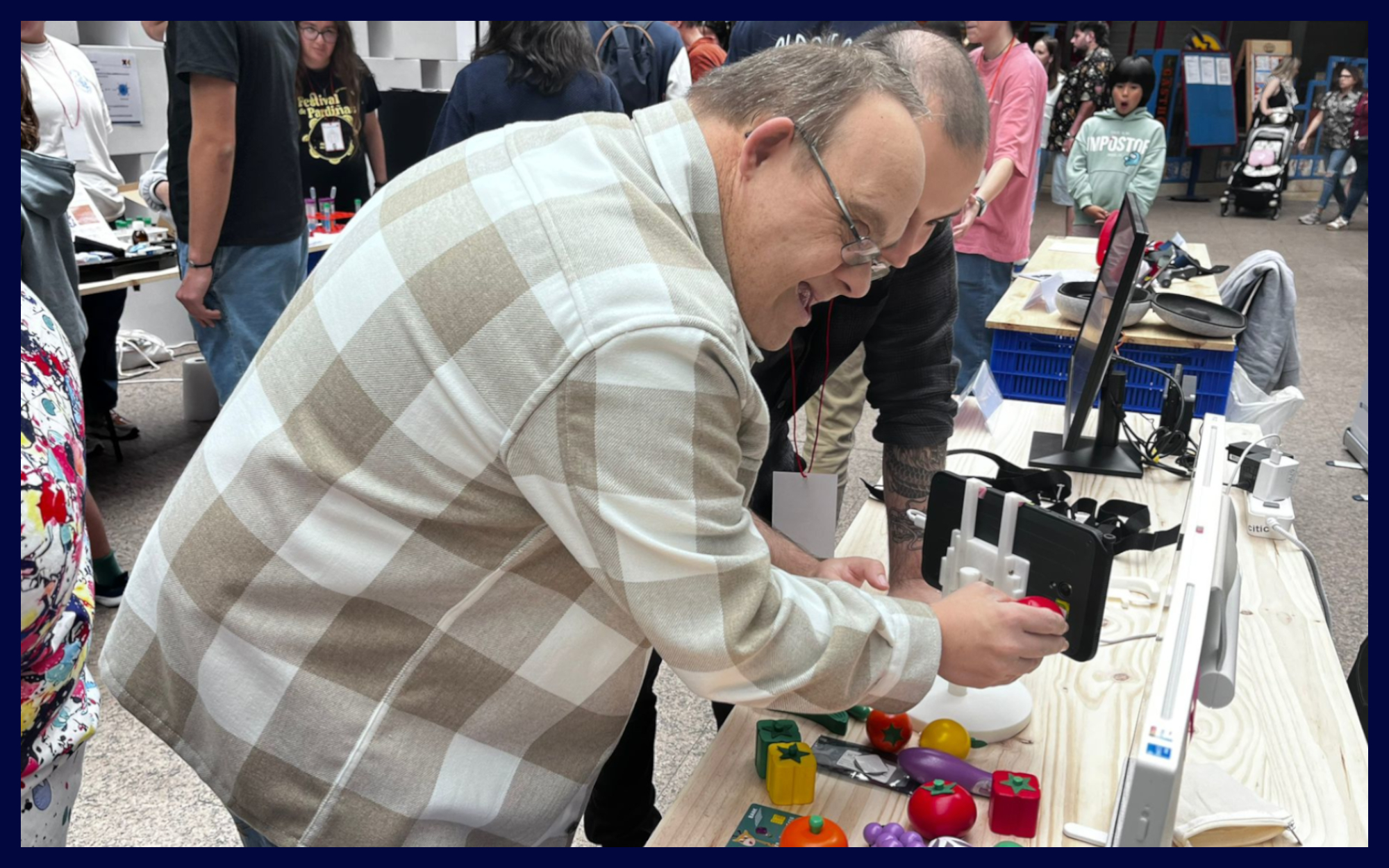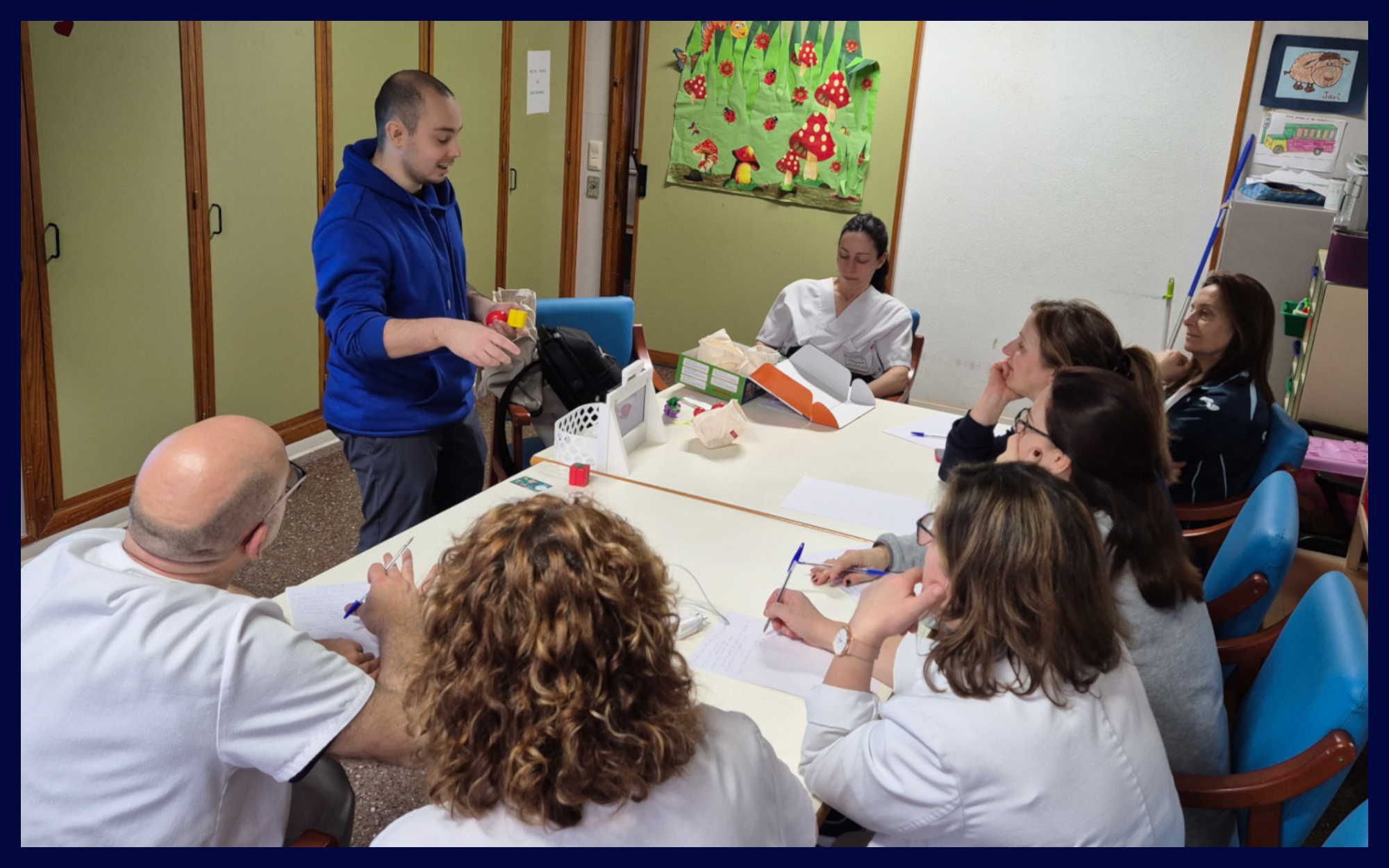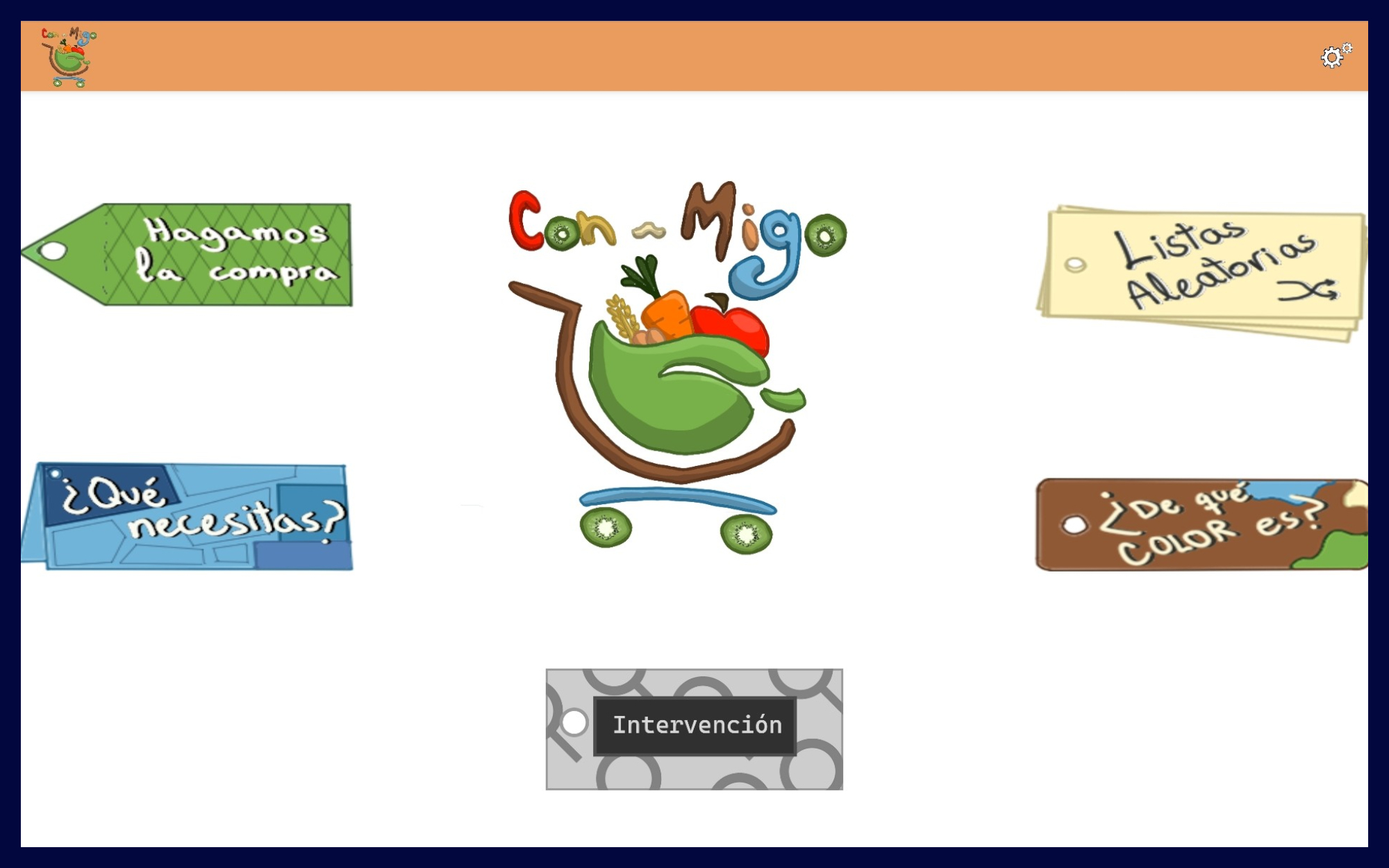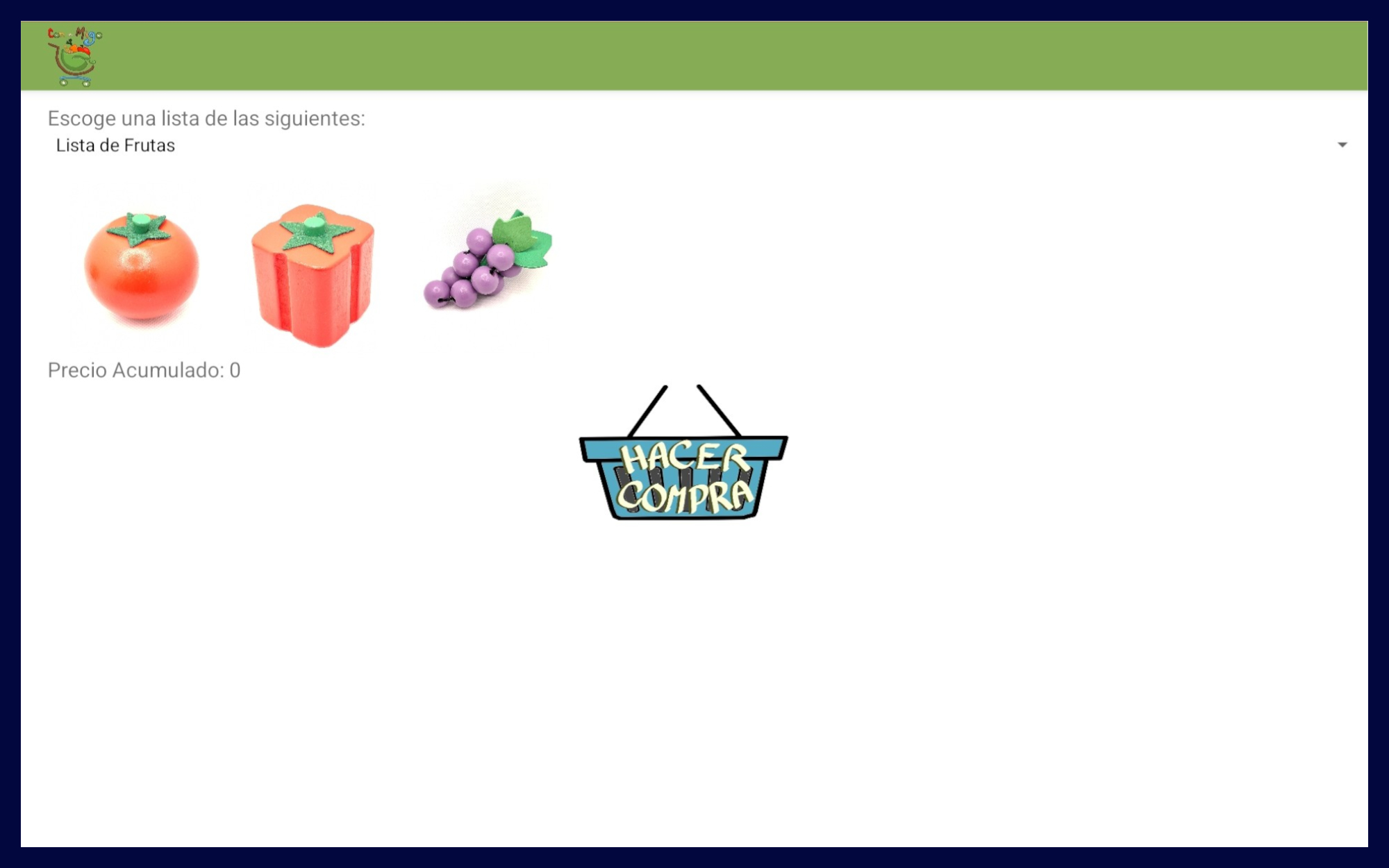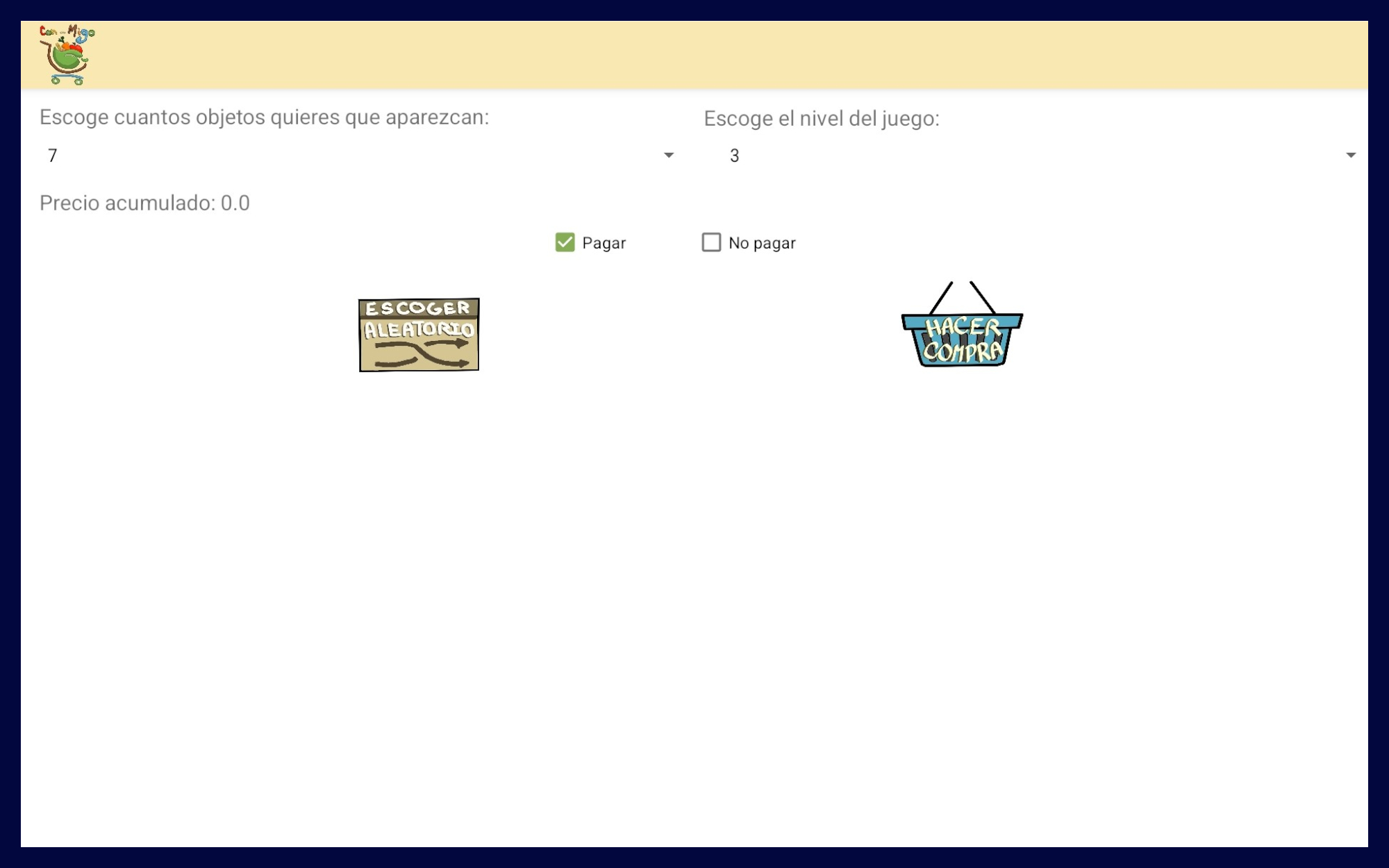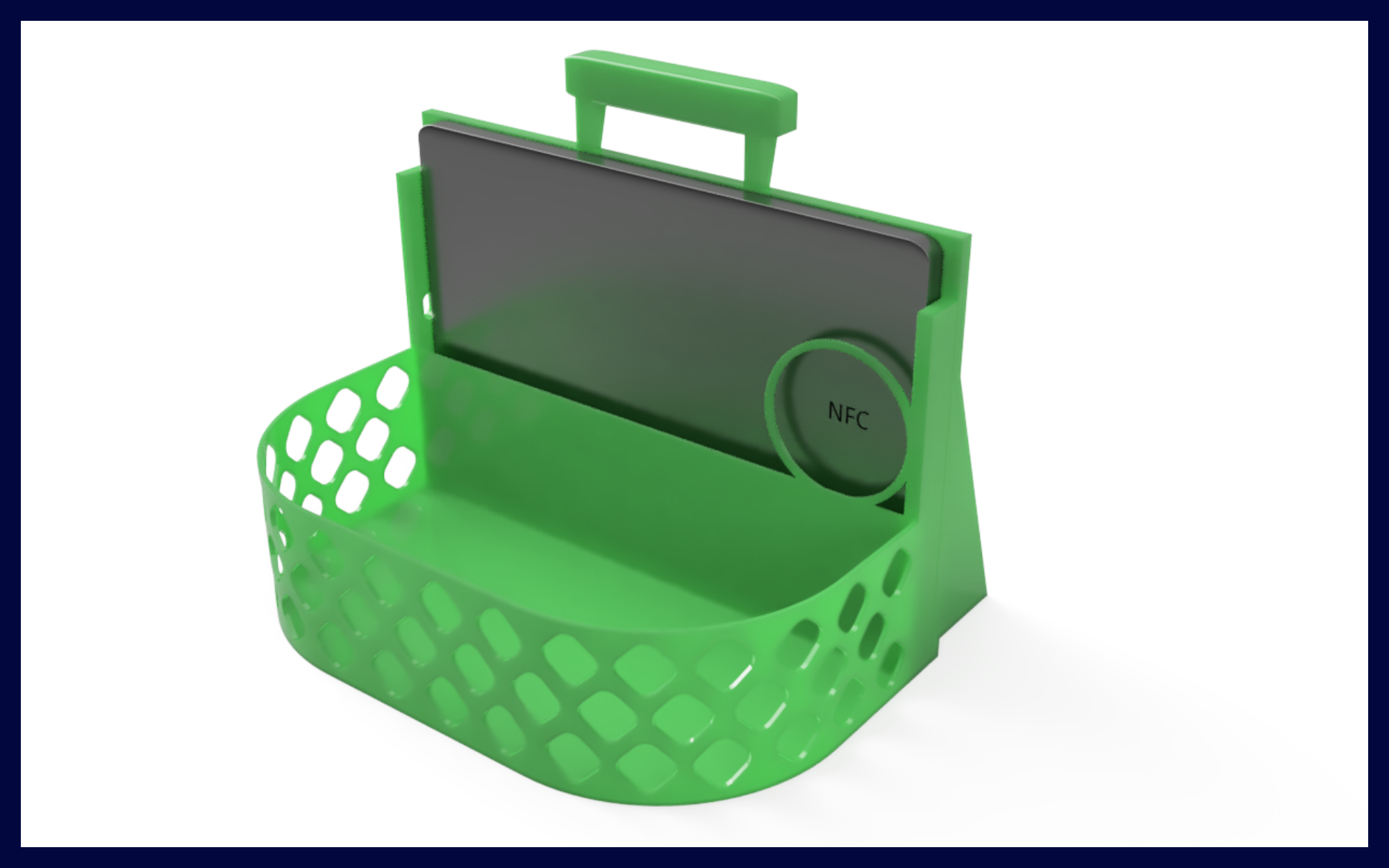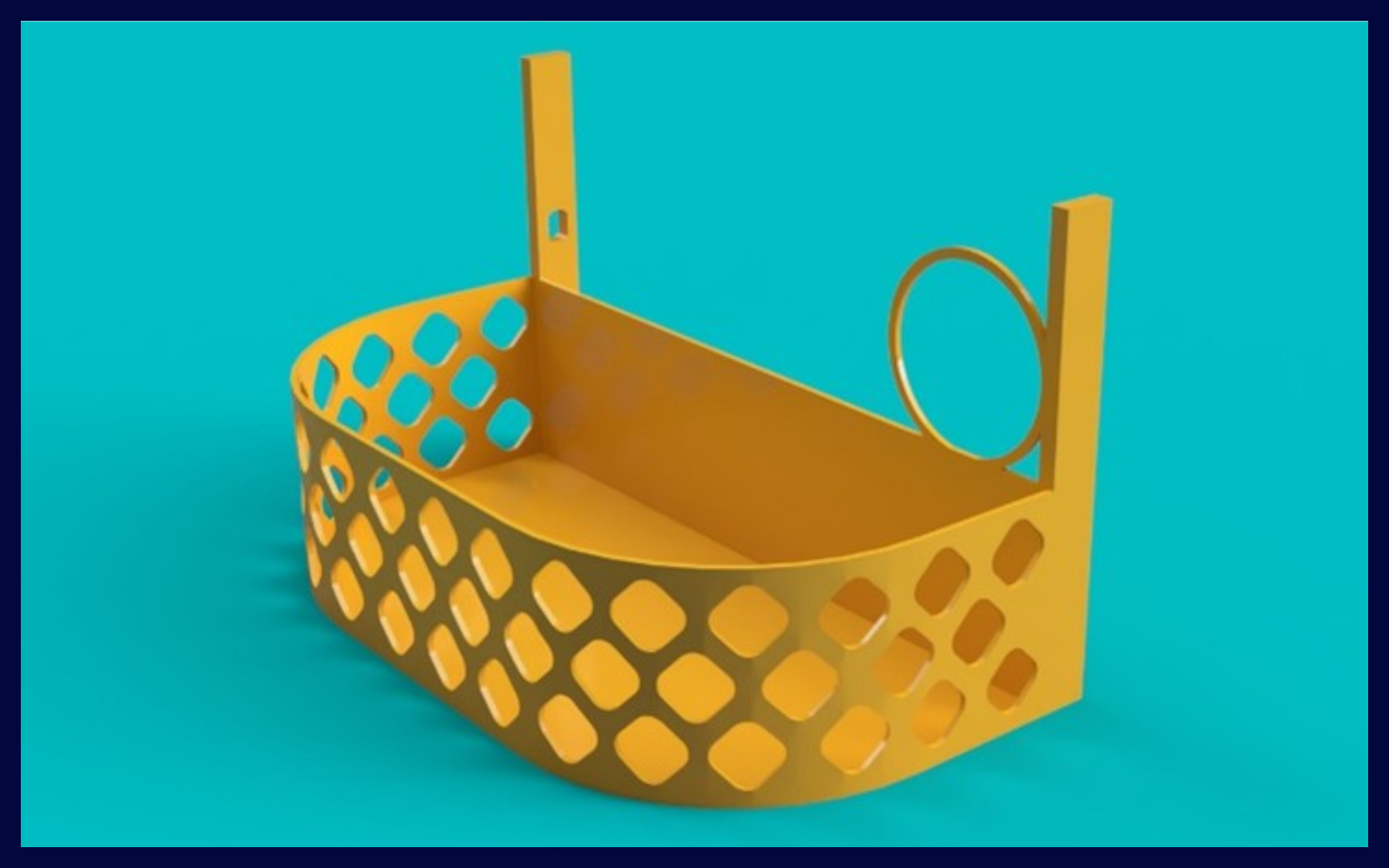Technical Breakdown of the Project
The Compra con-Migo application was developed in Android Studio, using Java as the main programming language and XML for interface design. This choice made it possible to take advantage of Android’s native functionalities and simplify access to the operating system, as well as to leverage the developer’s previous experience with the platform.
The user interface was customized, with externally designed buttons and logos, ensuring a user experience adapted to the participants. To store information about objects and shopping lists, a local SQLite database was used, allowing for the creation of all necessary tables and maintaining full control of application data. The app is distributed via an APK file, making direct installation on tablets possible without the need to access online stores.
The application includes several educational and recreational activities focused on shopping simulation and cognitive development:
- Supermarket Shopping Game:
The caregiver selects a list of objects from the database. The user locates the physical objects and scans each one using NFC. The system provides positive or negative feedback depending on correct identification. At the end, the user performs the “payment” by scanning physical coins and bills; only exact payment is accepted. - Recipe Tracking Game:
The user completes a list of objects one by one, reinforcing sequencing and planning. - Random List Game:
The caregiver determines the number of objects, whether the user will perform payment, and the difficulty level. There are three levels that vary depending on the presence of same-colored objects and the size of the list. - Color Recognition Game:
The caregiver selects a color and the number of objects that the user must identify, reinforcing visual learning in an interactive way. - Intervention:
This activity takes on an academic and research focus rather than a playful one. Its purpose is to carry out an intervention in CAPD centers in Galicia, aiming to evaluate the improvement of users after using the tool. The intervention is structured around five shopping lists, completed consecutively. The application automatically records the number of selection errors, counting errors during payment, and the total time spent completing each list. The final goal is to publish the results of this research, thus contributing to the generation of scientific evidence on the use of digital tools to support cognitive and functional intervention.
The physical support for the tablet and objects was designed and manufactured using various tools. First, Fusion 360 was used for CAD modeling and 3D design. Next, Creality Print was used to prepare the files for 3D printing and optimize the settings. Finally, a Creality K1 Max AI printer, known for its high precision, was used to manufacture the components adapted to users’ needs.
The final support includes:
Dedicated space for the tablet.
Basket for organizing objects.
Marker to locate the NFC sensor.
USB-C slot for connection to an external screen.
Ergonomic handle to facilitate grip and improve accessibility.
Additional features allow caregivers to modify the database by adding or deleting objects and lists, ensuring constant content updates.
Interaction with physical objects is carried out using NFC technology integrated into the Galaxy Tab Active4 Pro tablet, which also allows connection to an external monitor via USB-C DisplayPort.
The application follows a modular design that allows clear and uninterrupted navigation. The main menu provides access to different features and settings, while secondary buttons disappear during activities to prevent accidental interruptions. All user actions are recorded to evaluate progress, interaction, and participation.
The combination of physical interaction with objects and visual and auditory feedback strengthens cognitive and motor skills in a playful and safe way.
